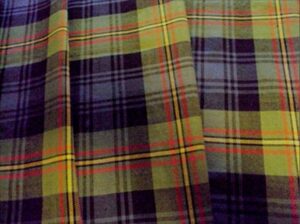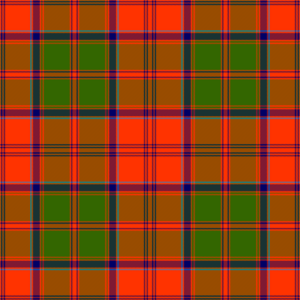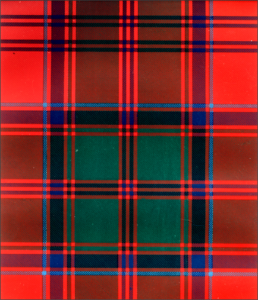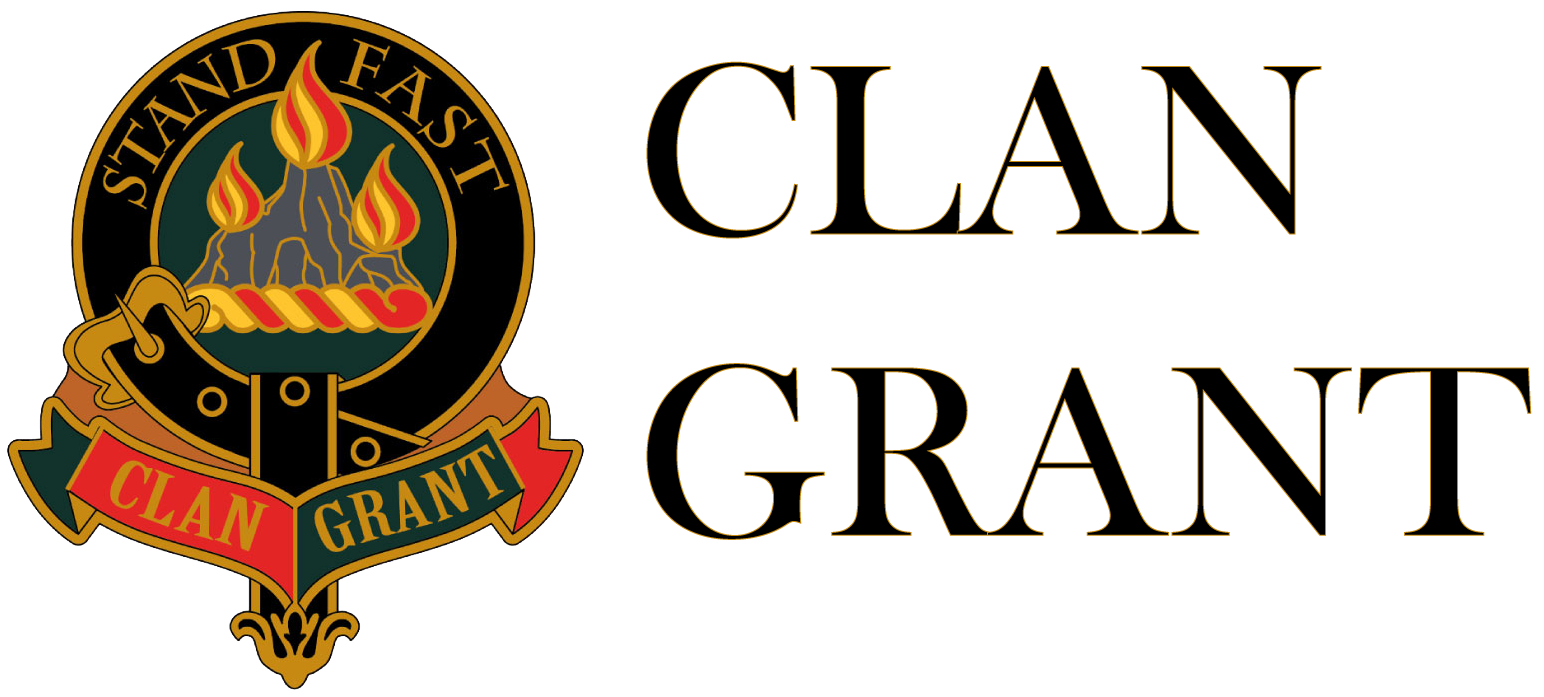
CLAN GRANT TARTAN
In 1725, the government raised six independent companies from the loyalist clans Campbell, Grant, Fraser and Munro. The companies were raised to “keep watch upon the Braes,” but more significantly, to tamp down possible uprisings of latent Jacobite sentiment.
The tartan worn by these independent companies was almost certainly a forerunner of the now famous “Black Watch,” or tartan of the 42nd Royal Highland Regiment. That early rendition of the blue, green and black tartan was woven by over sixty weavers on the estates of the Clan Grant in Strathspey – hence, our clan’s association with the tartan.
Today, this tartan is still worn by the Clan Campbell as their principal sett, and also by the Grants, Munros and Sutherlands.
Toward the end of the 18th century, a version of this military tartan, with over-stripes of scarlet and yellow, was designated as “Grant Tartan.” This sett was documented in the 1819 Key Pattern Book of Wm. Wilson & Son of Bannockburn, a large weaving mill near Sterling, which supplied tartans to the government regiments. That tartan was almost certainly the sett of the 1st Strathspey Fencible Regiment raised by Sir James Grant of Grant, Baronet, in 1793.

Also documented in the Wilson Key Pattern Book in 1819 was a sett designated “Grant Kilt.” This tartan was adapted from an earlier sett known as “New Bruce,” which apparently had no connection to the Clan Bruce, but was named in honor of the famous Scottish warrior and king, Robert the Bruce.

A version of this tartan was illustrated in The Tartans of the Clans of Scotland by James Grant, published at Edinburgh in 1886. (The author, James Grant, was not related to the Sir James Grant previously mentioned.) This sett was later designated to be the authorized Grant tartan by the Rt. Hon. 6th Lord Strathspey, Sir James Patrick Trevor Grant of Grant, Baronet.


CLAN GRANT TARTAN
In 1725, the government raised six independent companies from the loyalist clans Campbell, Grant, Fraser and Munro. The companies were raised to “keep watch upon the Braes,” but more significantly, to tamp down possible uprisings of latent Jacobite sentiment.
The tartan worn by these independent companies was almost certainly a forerunner of the now famous “Black Watch,” or tartan of the 42nd Royal Highland Regiment. That early rendition of the blue, green and black tartan was woven by over sixty weavers on the estates of the Clan Grant in Strathspey – hence, our clan’s association with the tartan.
Today, this tartan is still worn by the Clan Campbell as their principal sett, and also by the Grants, Munros and Sutherlands.
Toward the end of the 18th century, a version of this military tartan, with over-stripes of scarlet and yellow, was designated as “Grant Tartan.” This sett was documented in the 1819 Key Pattern Book of Wm. Wilson & Son of Bannockburn, a large weaving mill near Sterling, which supplied tartans to the government regiments. That tartan was almost certainly the sett of the 1st Strathspey Fencible Regiment raised by Sir James Grant of Grant, Baronet, in 1793.

Also documented in the Wilson Key Pattern Book in 1819 was a sett designated “Grant Kilt.” This tartan was adapted from an earlier sett known as “New Bruce,” which apparently had no connection to the Clan Bruce, but was named in honor of the famous Scottish warrior and king, Robert the Bruce.

A version of this tartan was illustrated in The Tartans of the Clans of Scotland by James Grant, published at Edinburgh in 1886. (The author, James Grant, was not related to the Sir James Grant previously mentioned.) This sett was later designated to be the authorized Grant tartan by the Rt. Hon. 6th Lord Strathspey, Sir James Patrick Trevor Grant of Grant, Baronet.



